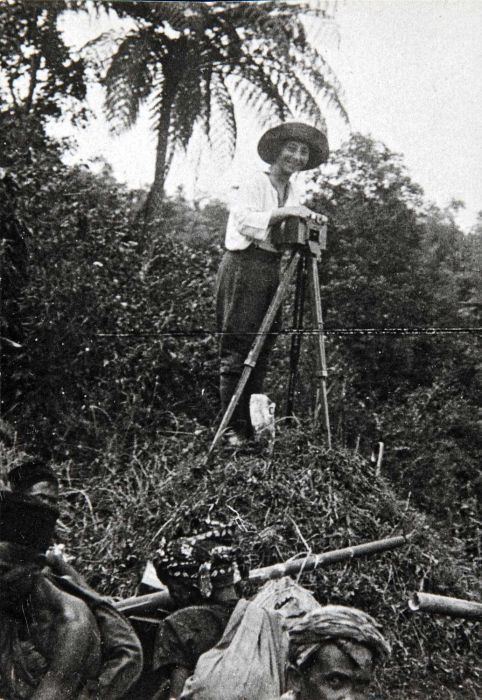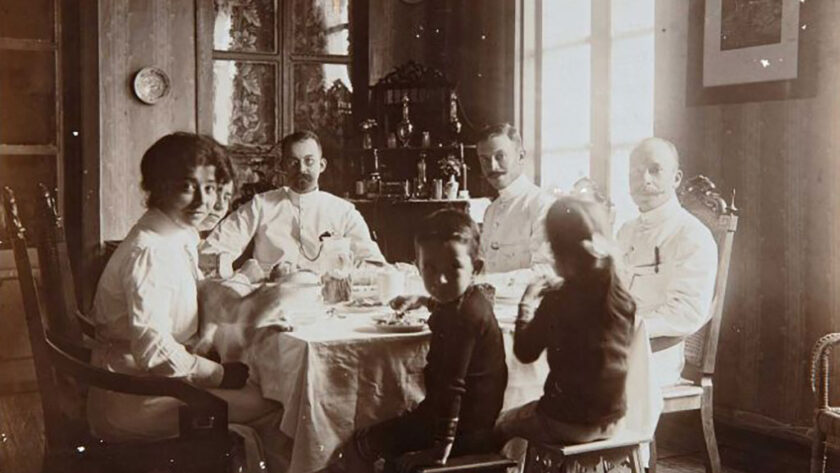Beginnings
Thilly Weissenborn (1883–1964) was the first professional female photographer in the former Dutch East Indies and one of the rare early 20th-century photographers born in Indonesia. Her work played a key role in promoting the region’s emerging tourism industry of the time, offering captivating visuals that shaped how the East Indies were perceived by the world.
Margarethe Mathilde Weissenborn, later known as Thilly, was born on 22 March 1883 (or possibly 1889) in East Java, either in Surabaya or Kediri, during the era of the Dutch East Indies (now Indonesia). Her parents were German-born but naturalized as Dutch citizens. The family ran a coffee plantation in Kediri. In 1892, Thilly’s mother moved back to the Netherlands with her children, settling in The Hague, and was joined by her husband a year later. After five years, her father and eldest brother left for Tanganyika (German East Africa) to become planters. One of Thilly’s older sisters, Else, who had studied photography in Paris, opened a photo studio in The Hague in 1903. It was there that Thilly first stepped into the world of photography. In 1912, she returned to Java with her brother Theo to join another brother, Oscar, who was living in Bandung (West Jawa).

Career
In 1913, Thilly Weissenborn began working at Atelier Kurkdjian, a renowned photographic studio in Surabaya founded by Armenian photographer Onnes Kurkdjian. The studio was known as the sole Kodak agent in East Java, and was thriving under the management of GP Lewis, an Englishman who oversaw a team of thirty photographers. Under his mentorship, Thilly refined her skills in both photography and retouching.
In 1917, she relocated to Garut, West Java, where she took charge of a small photo studio, GAH Lux, housed within the Garoetsche Apotheek en Handelsvereeniging, a pharmacy owned by Denis G. Mulder. When Mulder moved to Bandung in 1920, he handed over the business to Thilly, who named it Foto Lux. A decade later, in 1930, she formally established her own company, Lux Fotograaf Atelier NV, which she successfully ran in Garut for the next ten years.

Thilly Weissenborn was the first prominent female photographer in Indonesia and one of the few of her time born in the archipelago. Her lyrical images—featuring landscapes, interiors, and portraits—helped shape the growing tourism industry in the Dutch East Indies. Her photos appeared in the 1922 travel guide Come to Java and illustrated Louis Couperus’ 1923 book Oostwaarts (Eastward). She traveled extensively, especially in Bali, aiming to capture its exotic beauty while respecting the dignity of her subjects. Some of her work was later misused, such as a photo of two women carrying water repurposed for a French novel titled L’Île des seins nus (Island of Bare Breasts). Over time, her portraits shifted from semi-nude figures to elegant images of dancers, published in magazines like Inter-Ocean, Sluyter’s Monthly, and Tropical Netherlands, which promoted a more refined image of Bali to foreign audiences.
Later life
During World War II, Japan’s 16th Army invaded West Java in February 1942, leading to the internment of around 30,000 Allied and Indo-European civilians. In 1943, Thilly Weissenborn was imprisoned in the Kareës camp in Bandung, where women and children remained until 1945.
Garut was later destroyed by fire, and during the Indonesian National Revolution, her studio and all her glass negatives were lost in 1947. That same year, she married Nico Wijnmalen, and the couple settled in Bandung.
In 1956, political changes in Indonesia forced them to return to the Netherlands. Thilly Weissenborn passed away on 28 October 1964 in Baarn, Utrecht Province.
Legacy

Thilly Weissenborn’s family donated one of her photo albums to the Tropical Museum in Amsterdam, and her works have been featured in the National Gallery of Australia. In 1983, her nephew Ernst Drissen published a retrospective of her work titled Vastgelegd voor Later: Indische Foto’s (1917-1942) van Thilly Weissenborn in Amsterdam. Additionally, the Royal Netherlands Institute of Southeast Asian and Caribbean Studies (KITLV) has digitized and made some of her photographs available in an online collection.


